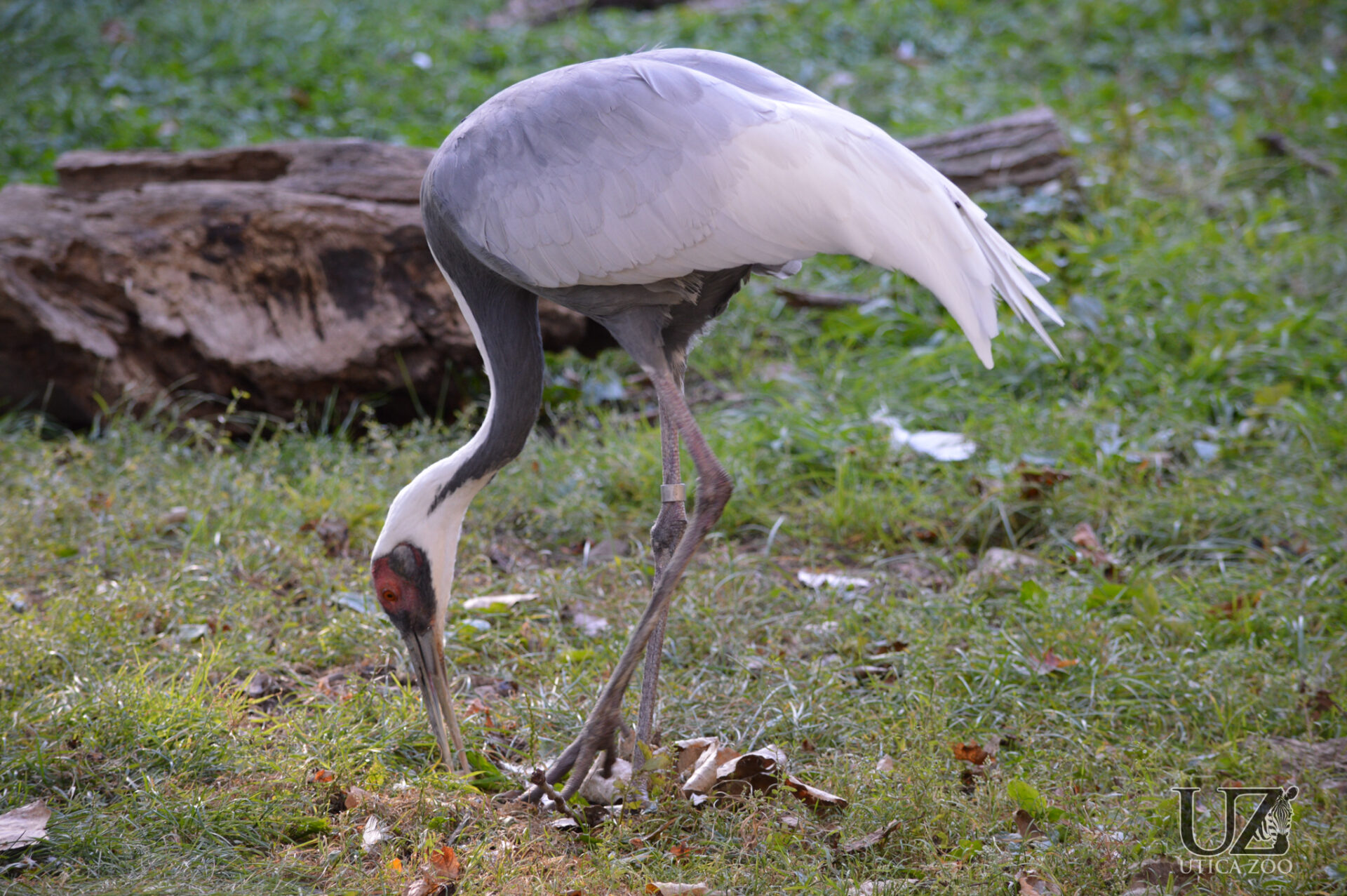White-Naped Crane

Basic Information:
Scientific Name: Grus vipio
Habitat: White-naped cranes are found in grassy marshes, wet sedge meadows and reedbeds of northern Mongolia, southern Siberia, Korea, Japan and central China.
Diet: White-naped cranes eat insects, seeds, roots, plants, and small mammals.
Size: 3.6 to 4.1 feet tall / 6.5 to 6.8 foot wingspan
Weight: About 12 pounds
Lifespan: 15.1 years according to AZA Species Survival Statistics
Distribution Map:
I.U.C.N. Conservation Status:

What does this mean?
Vulnerable – a species determined by the International Union for Conservation of Nature (I.U.C.N.) to possess a high risk of extinction as a result of rapid population declines of 30 to more than 50 percent over the previous 10 years (or three generations), a current population size of fewer than 1,000 individuals, or other factors.
Our White-Naped Cranes:
Creampuff (“Creamy”) (Male) – Born May 23, 1981
*Creamy is one of the oldest cranes in human care*
Peaches (Female) – Born June 2, 2012
About White-Naped Cranes:
Named for the dark gray color of their feathers with a white-stripe on their neck, these cranes can be found across marshlands throughout eastern Asian countries such as Mongolia, Korea, Japan, China, and southern Siberia. Being primarily social birds, they can often be seen digging for roots, seeds, and insects in the ground or fishing for fish in the nearby water alongside a number of other cranes. They are also known for creating long lasting, monogamous bonds with their mates and can often be found participating in mating displays with each other. In these displays, the two participants will call back and forth to each other while looking upwards and flapping their wings in a dance. If successful, the pair will then nest with each other in the spring season right on the open wetland. From here, these cranes are known to be staunchly territorial and defensive of their eggs.
Did You Know?!
- White-naped cranes have a special dance! Mated pairs of cranes engage in unison calling, which is a complex and extended series of coordinated calls. The birds stand in a specific posture, usually with their heads thrown back and breaks skyward, during the display.
- In Korea, white-naped cranes are a popular New Year’s symbol. They are also featured widely throughout Korean art and folklore.
- White-naped cranes are capable of flying at speeds between 25 and 35 miles per hour.
